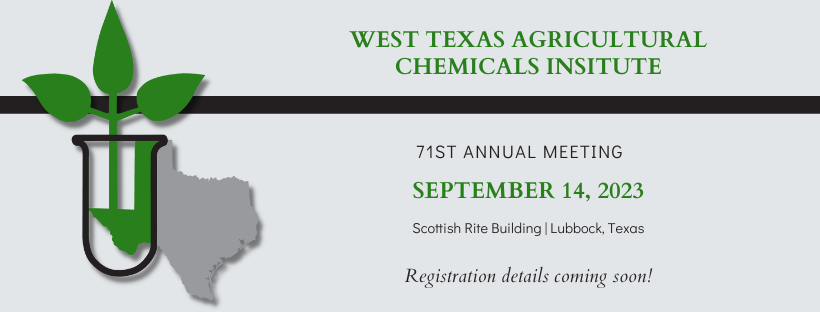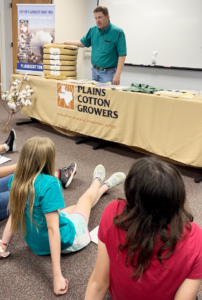Welcome to the May 19, 2023 issue of Cotton News, a service provided by Plains Cotton Growers Inc. for the cotton industry in the Texas High Plains and beyond.

50-Year Fumigation Rule Lifted on U.S. Cotton Imports
The Bangladesh government has lifted its fumigation requirement on U.S. cotton imports, which has been in effect for nearly 50 years.
This shift will remove a significant export barrier for U.S. cotton to Bangladesh, as well as saving Bangladeshi mills time and money as they look to the U.S. to fill their cotton fiber import needs.
Bangladeshi mills have been paying over a million dollars annually to cover unnecessary fumigation costs imposed on cotton imported from the U.S.
U.S. exporters will continue to use APHIS-generated phytosanitary certificates, but under the new regulation, the certificate will have additional language confirming no live boll weevils are in U.S. baled cotton. APHIS will issue revised instructions for exporters.
Bangladesh’s Agricultural and Commerce Ministries’ decision to lift the fumigation requirements on U.S. cotton came after six Bangladesh Ministry of Agriculture delegation members joined a CCI-sponsored U.S. cotton tour.
The Bangladesh Ministry of Agriculture delegation met with U.S. cotton industry representatives and visited cotton fields, gins and warehouses, and the USDA Agricultural Ginning Research Laboratory.
The tour included a review of the U.S. cotton industry’s successful Boll Weevil Eradication Program and its modern cotton harvesting and ginning techniques.
Bangladesh currently ranks as the No. 2 global importer of cotton, according to the May 2023 USDA FAS global market analysis.
Although there is domestic cotton produced in Bangladesh, it is 1% or less of total demand.
2022 Emergency Relief Program
Agriculture Secretary Tom Vilsack today announced plans to roll out $3.7 billion in Emergency Relief Program (ERP) and Emergency Livestock Relief Program (ELRP) assistance to crop and livestock producers who sustained losses due to a qualifying natural disaster event in calendar year 2022. USDA is sharing early information to allow producers time to gather documents in advance of program delivery. Through distribution of remaining funds, USDA is also concluding the 2021 ELRP program by sending payments in the amount of 20% of the initial ELRP payment to all existing recipients.
“U.S. agricultural producers nationwide endured crippling natural disaster events in 2022 including a megadrought, Hurricane Ian, epic flooding and catastrophic wildfires. To say these events were costly is an understatement,” Vilsack said. “Last year USDA streamlined the delivery of natural disaster assistance, speeding up the timing of payments and cutting the time spent on paperwork by 90% or one million hours relative to previous disaster programs. While we will use the same streamlined approaches, funding is limited and significantly less than the estimated losses. We are designing payment factors that ensure the fair, equitable and efficient delivery of program benefits to help as many producers as possible offset the significant financial impacts resulting from these ongoing and widespread natural disasters.”
Background
On December 29, 2022, President Biden signed into law the Disaster Relief Supplemental Appropriations Act, 2023 (P.L. 117-328) that provides about $3.7 billion in financial assistance for agricultural producers impacted by wildfires, droughts, hurricanes, winter storms and other eligible disasters occurring in calendar year 2022.
Additionally, the Act specifically targets up to about $500 million to livestock producers for losses incurred due to drought or wildfire in calendar year 2022.
ERP 2022 for Crop Producers
USDA, through the Farm Service Agency (FSA), intends to deploy the lessons learned from the development and implementation of ERP and ELRP for previous years’ losses to ensure expedited assistance for 2022 losses.
Based on positive feedback from producers, stakeholder groups and FSA county office staff, USDA intends to provide an ERP track for producers who had coverage through Risk Management Agency’s federal crop insurance or FSA’s Noninsured Crop Disaster Assistance Program (NAP). Through a streamlined application process, USDA intends to be in a position to send pre-filled applications directly to eligible producers in early summer.
For producers who have not been able to avail themselves of risk management coverage or whose losses were not covered, USDA intends to offer a program track to access ERP assistance with assistance provided to producers who suffered a decrease in allowable gross revenue in 2022 due to necessary expenses related to losses of eligible crops from a qualifying natural disaster event.
Instead of implementing these program tracks as two separate phases on different timelines, FSA intends to make both tracks available to producers at the same time, noting that the first track will follow a streamlined process with less paperwork burden, based on existing, available risk management data. The second ERP track would require that producers provide FSA with certain information related to revenue.
WASDE Analysis
U.S. cotton is projected to plant less acreage in 2023 but will see higher production than in 2022. 
The 2022 cotton crop saw a record level of abandonment, with 13.76 million acres planted but only 7.31 million acres harvested, mainly due to dry conditions in Texas.
Currently, USDA projects 11.26 million acres planted with 8.71 million acres harvested. It will be important to keep an eye on acres abandoned as the year advances, with growing conditions in West Texas remaining dry. In the May WASDE, U.S. cotton production is projected at 15.50 million bales, a 7% increase from 2022.
On the demand side, exports are expected to increase by 0.9 million bales to 13.5 million bales. With higher exports, cotton ending stocks are projected to decrease by 0.20 million bales to 3.30 million bales.
The average farm price is projected to weaken to 78 cents per pound.
William Maples, Ph.D.
Extension Economist
Mississippi State University
Letter to the Editor: W.B.’s Suitcase
W.B. was a good farmer and friend. I enjoyed working with him at Plains Cotton Growers. Reading your article made me think of the first time W.B. came with me to Washington D.C.
He had brand new luggage with him that required a key to open.
As soon as we got to our rooms, he realized he couldn’t find the key and was locked out of his suitcase. We got it figured out without having to break into his luggage. The situation wasn’t funny to him until after the fact.
After I read the article, I called him and we picked back up right where we left off many years ago. We spent a lot of time on the phone that afternoon, but as the article stated, we both have plenty of it.
-Don Johnson, former PCG executive vice president (1965-1997)
PCG Educates the Next Generation
Fourth graders from seven different elementary schools in Ochiltree County were excited to learn about cotton May 16, 2023, at the water festival put on by the North Plains Groundwater

PCG Director of Field Services Mark Brown discusses cotton bales with fourth graders in Perryton, Texas, at the North Plains Groundwater Conservation District water festival.
Conservation District.
The students were able to touch seed cotton, cotton lint and learn about the different products made from cotton. Some of their comments were pretty entertaining:
“Cotton is in ice cream? That’s so cool.”
“I’ve washed lots of dollar bills on accident – there’s cotton in money?”
“I guess you could say money does grow on trees!”
“I busted a baseball once, all that fluff in there was cotton?”
Director of Field Services Mark Brown emphasized the drought tolerance of cotton and the enhanced efficiency of cotton producers’ water usage over time.
Inspiring passion in future generations for this way of life is a privilege we get to participate in as an organization. It takes hours of travel time and preparation, yet the enthusiasm for cotton is all worth it as we hope to produce more advocates for the cotton industry and production agriculture.